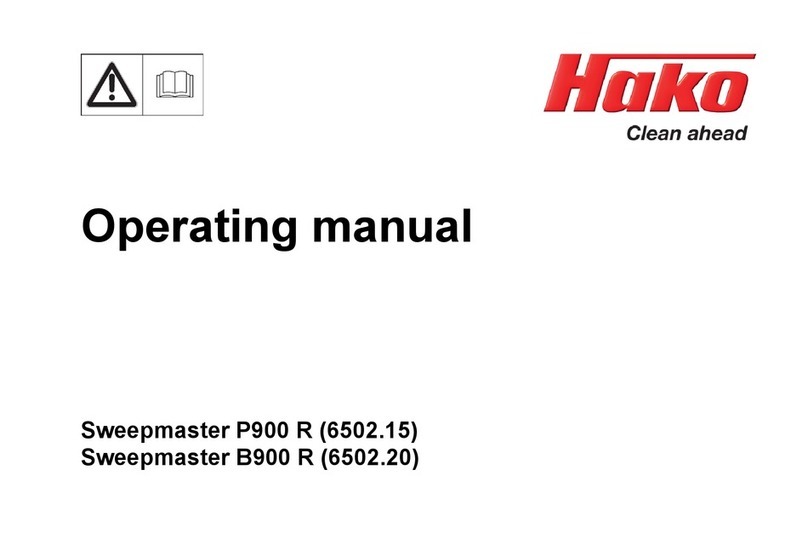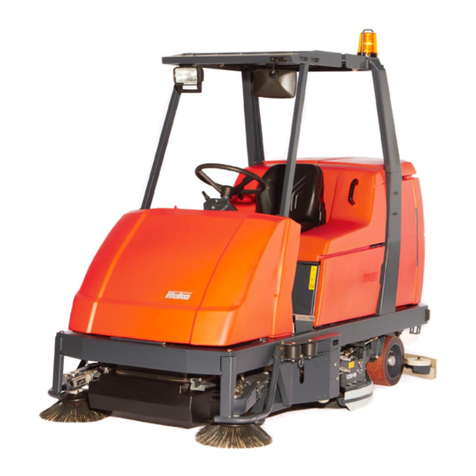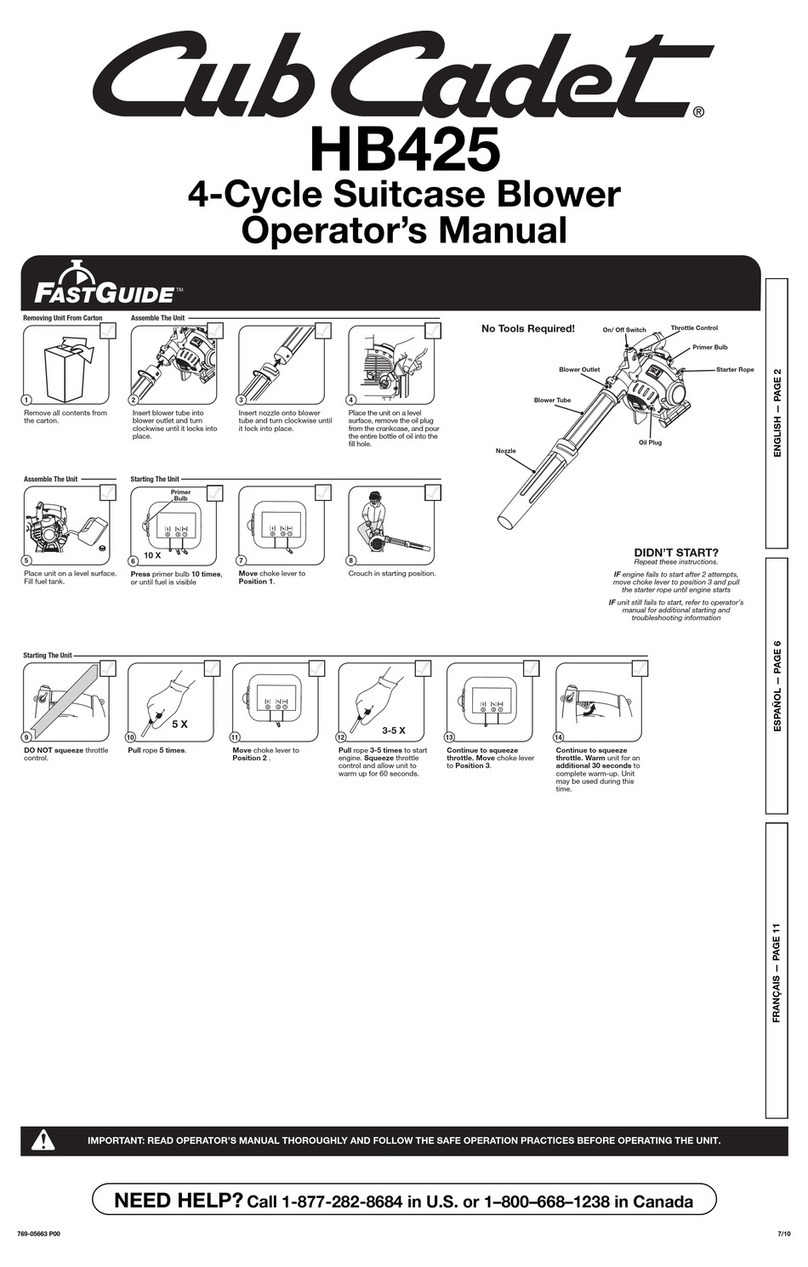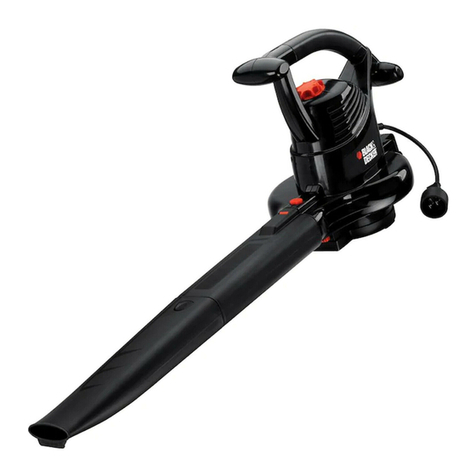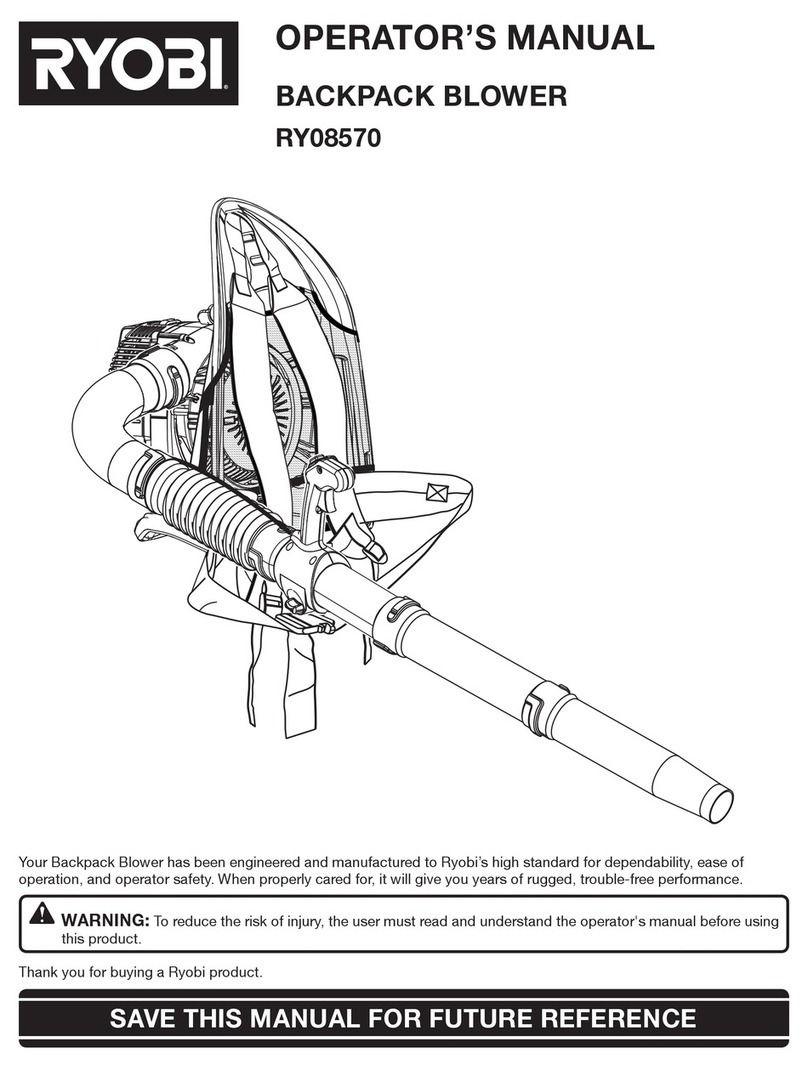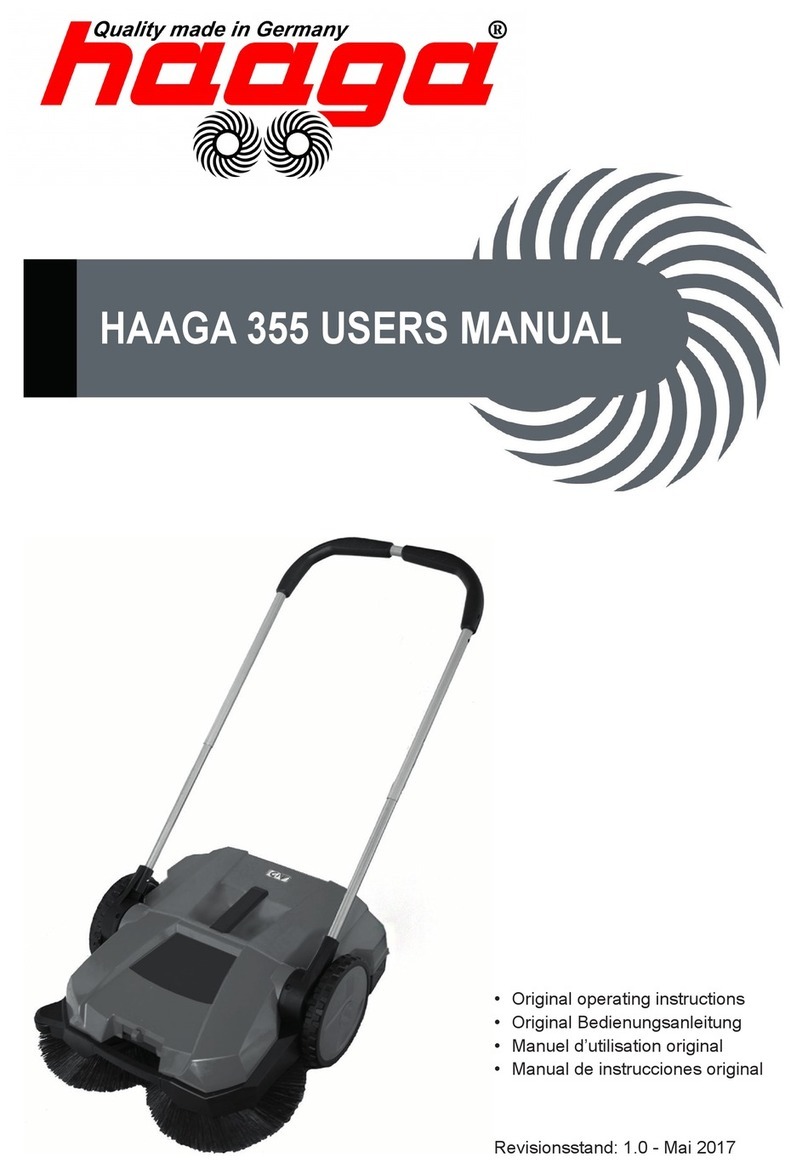8
Safety Information
1.3 Operating information
• The vehicle is not suitable for clear-
ing up fluids, dust or substances
which are hazardous to health, in-
flammable or explosive. No burning
items may be swept up, such as
glowing cigarettes. It is also forbid-
den to sweep up wood dusts, e.g.
beech and oak dust - health hazard!
• The vehicle must not be driven
through puddles of water when oper-
ating in vacuum-sweeping mode.
• Before starting up the vehicle for the
first time, the battery to be used must
be fully charged according to the
prescribed initial battery charge pro-
cess. Hako assumes no liability for
damage to batteries resulting from
failing to complete the initial battery
charge process.
• The vehicle and its equipment must
be checked in terms of perfect work-
ing condition and operational safety
before being put to use. Clear any
faults immediately! The vehicle must
not be used if it is not in a proper
working condition.
• Before putting the vehicle into opera-
tion, adjust the driver's seat so that
you have a perfect view of the front
and rear path of travel and working
area!
• For safety reasons, the driver's seat
is equipped with a seat contact
switch. The vehicle can only be start-
ed when the operator is sitting on the
driver's seat. The function of the seat
contact switch must not be by-
passed.
• The seat contact switch is monitored
electronically. Any attempt at manip-
ulation can lead to the vehicle being
automatically locked against use.
• Always switch off all the drives be-
fore switching the vehicle on.
• The vehicle must only be started, put
into motion and stopped from the
seat.
• Ensure there is sufficient ventilation
when sweeping in closed spaces
(dust).
• The driving speed must always be
adapted to the ambient conditions
and load status.
Three-wheel vehicles are less stable
than four-wheel vehicles, therefore:
avoid sudden steering movements
when driving at higher speeds, tak-
ing corners at too high a speed could
cause the vehicle to tip. Only use the
vehicles on level surfaces, never on
gradients. Drive up and down in-
clines in straight lines. When driving
up, down or across slopes, avoid
turning corners suddenly or in jerks.
There is a risk of tipping when in an
inclined position!
• Do not drive the vehicle on slopes
with a gradient steeper than the limit
gradient indicated on the vehicle.
• The approved gross total weight and
permissible axle loads must never
be exceeded. Check the fill level of
the dirt hopper at frequent intervals.
• Only put the vehicle into operation
when the seat console is closed and
locked and the shaking device lever
has been pushed in.
• Before starting work, the operator
must be fully familiar with all adjust-
ment, operating and control ele-
ments as well as their respective
function. It is too late to do this when
the vehicle is actually in operation!
• Always wear heavy duty, non-slip
footwear when working with the vehi-
cle.
• The vehicle may only be driven on
and the equipment used on those
surfaces which have been approved

